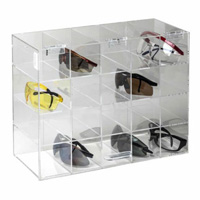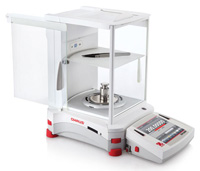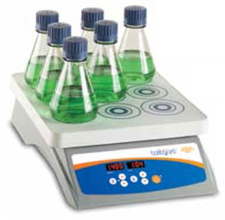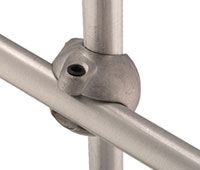 |
 |
| Mercury in the Laboratory | ||

With proper controls and training, elemental mercury can be safely used in a laboratory setting. However, when spilled or misused it can present a significant hazard. See the following stories for some recent chilling (and expensive) examples:

Make your PPE readily available with safety dispensers from Safety Emporium.
Therefore, minimize your use of mercury and mercury compounds whenever possible.
According to the MIT Department of Health and Safety's Safety Note dated October 6, 1989:
The element mercury is a liquid metal with a vapor pressure of 0.00185 mm at 25 degrees C. This corresponds to a saturation concentration in air of 20 milligrams of mercury per cubic meter of air or 2.4 ppm . The American Conference of Governmental Industrial Hygienists has established a threshold limit for mercury vapor of 0.05 milligrams of Hg per cubic meter of air for continuous 40 hour per week exposure. Long term chronic exposure to mercury vapor in excess of 0.05 mg Hg per cubic meter of air may result in cumulative poisoning. The use of mercury in laboratory amounts in well-ventilated areas is fairly safe; however, mercury can present a health hazard under the following circumstances:

Laboratory operations are a breeze with Ohaus analytical balances from Safety Emporium.
Mercury compounds can be quite dangerous. A professor at Dartmouth University (an experienced researcher and expert on the toxicology of heavy metal poisoning) died in 1997 after spilling just a few drops of dimethylmercury on her latex gloves.

Whenever you perform any action with mercury it will spill and splash. It inevitably forms tiny beads that cling to many surfaces and roll several feet away. Large drops quickly break up into thousands of small ones as described above.
Mercury can be handled safely by a professional chemist, although you should minimize or eliminate its use whenever possible. Here are some prudent practices when using mercury:

Safety Emporium has all kinds of lab equipment such as stirring hot plates.
The cost of cleaning up a thermometer break in a laboratory oven far exceeds that of a new laboratory oven with a built-in digital temperature display and fail-safe mechanism.

Those who use mercury know that clean mercury has a wonderfully shiny surface. But over time, the mercury in your bubbler or diffusion pump tends to get dirty and contaminated, usually with a floating film of gray/black sludge. While you certainly need to clean your apparatus, you can easily recover most of the mercury for reuse rather than replacing it. This saves on disposal costs and reduces the amount of mercury you need to use.
The "best" cleanup method in a chemical sense would be distillation However, boiling mercury and then cleaning up the distillation apparatus afterward is not appealing for a number of obvious reasons. Luckily, there are two easier methods that work quite well for most needs. Before using either of these, set up a large steel or plastic spill tray in a fume hood! Do not try this on the bench because you will spill some mercury.

Clean mercury has a mirror-like surface like the one on this 8 mm bead. The lens of the camera says "Carl Zeiss". Photo by Rob Toreki.
These cleanup methods work because the sludge is insoluble and less dense than mercury. If your mercury is contaminated with a metal that has amalgamated such as sodium, you may be able to remove the metal chemically, for example, by quenching the sodium metal using established procedures. If the metal is not easily or safely removable through such chemical means, then proper disposal (rather than dealing with distillation) is your best option.
Small amounts of mercury residues left behind on contaminated glassware can be removed (dissolved) with a dilute nitric acid solution. Be sure not to pour the acid waste down the sink. Collect the used acid solution a waste container that is used only for mercury-contaminated nitric acid waste and dispose of it properly.

Remember, inhalation is the primary danger from mercury, especially if there is not good ventilation. In fact, some scientists believe that vapor inhalation from dental amalgams can cause Alzheimer's disease in certain genetically predisposed individuals, although the safety of dental amalgams is still a topic of hot debate. Brief, one-time exposures on the skin (from handling mercury) or even ingestion (it has been used as a laxative) are not likely to produce significant health effects in most cases, but don't test your luck. Chronic (long-term) exposure of any sort can lead to all sorts of nasty effects including permanent central nervous system damage, fatigue, weight loss, tremors, personality changes and death.

Chill out with laboratory condensers from Safety Emporium.
Because of the ease with which mercury is spilled, the difficulty of ensuring complete cleanup, the curiousity factor of a room temperature liquid metal, and the known health risks, we recommend that mercury use in high school and freshman-level college courses be discontinued entirely. This includes both mercury-containing compounds as well as equipment such as thermometers. In fact, the Centers for Disease Controls' MMWR reported on November 7, 2008 that the ATSDR found that mercury was the most common chemical released in school chemical incidents in the period 2002-2007.
Laboratory concerns aside, we'd like to see the use of mercury in dental amalgams discontinued regardless of whether there is a health risk to the patient. The exposure of the dental technicians, mercury waste discharge to the sewer during dental procedures, discharge of mercury during cremation etc. all present serious environmental and health hazards. See, for example, "Characterization of Methyl Mercury in Dental Wastewater and Correlation with Sulfate-Reducing Bacterial DNA" Environ. Sci. Technol. 2008, 42(8), 2780-2786. As of 2022, the EU is actively considering legislation which will phase out dental amalgams, a process that began in 2017 with the banning of amalgam use in children under 15 years of age and pregnant or breastfeeding women.
We also strongly support the banning of mercury in consumer products such as thermometers, thermostats, batteries, lighting, and motion switches. There are equally good or better alternatives that do not present a risk of personal or environmental contamination. The use of mercury-containing fluorescent lighting, particularly compact fluorescent lighting (CFL's) meant for household use, has been the source of considerable debate. While CFL's provide significant energy savings, thankfully, the declining cost and superior performance of modern LED lighting should make this concern moot in the near future.
The United States has recently taken some very good steps towards limiting mercury environmental contamination. For example, the Mercury Export Ban Act of 2008 banned the export of metallic mercury effective 2013, a move meant to discourage the wanton misuse of mercury in gold mining operations in developing nations. The act also requires the US Department of Energy to designate and manage an elemental mercury long-term disposal facility, although it appears as of 2022 this is an unfulfilled quest. Likewise, the European Parliament enacted an export ban effective in 2011 that also covers mercury compounds (this was superseded by more comprehensive legislation in 2017). And the Minamata Convention on Mercury should further reduce the use and emission of mercury and mercury-containing products.
The Obama administration scored a victory in reducing the rather significant power plant emissions of mercury and other toxins when Bush-era mercury emissions trading regulations were overturned in favor of strict emissions caps designed to drastically reduce atmospheric emissions from coal-fired power plants. By an agreement reached in late October of 2009, the US EPA would regulate emissions of mercury (and other hazardous air pollutants emitted from coal and oil-fired power plants) starting December 16, 2011. Alas, in 2018, the Trump administration announced plans to roll back the rules as too costly, despite industry having already complied and having no actual objection to keeping them. In 2022, the Biden administration announced it would reinstate the weakened rules. rules which have proven societal and environmental benefits.


Bring it all together with laboratory lattice frames and connectors from Safety Emporium.

[Top of this page] [ILPI Lab Safety Home Page]
This page was last updated Wednesday, April 20, 2022 and is copyright 1996-2025 by Rob Toreki. All rights reserved.